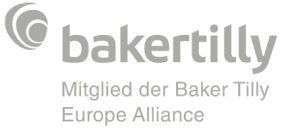30. August 2024
Reading Time: 5
Min.
news
The legislation underpinning SAF-T, which is an extremely complex reporting system, leaves much to be desired
The Standard Audit File for Tax (SAF-T) or D406 statement is back in the attention of the business environment after the issuing by ANAF on 20 August 2024 of over 15,000 notices to taxpayers who failed to submit their D406 statements or had done so incorrectly or only partially (see the ANAF press release of 21.08.2024). The notices were sent via the Virtual Private Space system in the form of PDF files with appended reports detailing non-compliant transactions.
It should be noted that the checks resulting in the issuing of the notices were undertaken by the authorities primarily on the basis of the results of the consistency tests published one day earlier, on 19.08.2024, and would seem to refer, at least going by the data we have collected so far, to D406 statements submitted for June 2024.
After analysing dozens of such notices and the problems arising from them, we were able to identify a not insignificant number of cases in which the issuing of notices was unjustified:
- many of the notifications alert taxpayers to the fact that an entire section of their D406 statement (General Ledger Entries) does not contain any entries – which was not true, at least in the cases we studied. The section in question had in each case been completed and was visible in both the XML file and the PDF document submitted to ANAF
- another situation has to do with one of the consistency tests published on 19.08.2024, which verifies the TVA-related information entered in the General Ledger Entries section. Although the structure of the XML file generated by the software used by the taxpayers is correct in this regard and respects the technical requirements provided by the authorities, it would seem that when the latter view and process the data they are not able to run said processes correctly and to construct suitable consistency tests
Clearly, the taxpayer must allocate time to reply to these erroneous notices, otherwise they run the risk of fines of even tax inspections.
It should be added that the consistency tests run by ANAF do not necessarily verify the quality of information submitted via D406 statements. To date, we have not observed the performance of any complex correlations between the data submitted via various tax declarations or annual financial statements and the data contained in D406 statements, with the tests being carried out only scratching at the surface of the possible issues associated with SAF-T. Consequently, the number of incorrect SAF-T statements may in reality be much higher (even if we exclude those notices issued erroneously by ANAF, as mentioned above)
How did we end up in a situation in which, more than two years after the implementation of SAF-T in Romania, there are still problems with the D406 statement?
To answer this question you have to go back to the legislation on which this extremely complex system of reporting is based, which leaves much to be desired. There are no rules clearly stipulating the reporting requirements, the standard itself on which SAF-T is based does not necessarily reflect the Romanian accounting system, which naturally generates multiple problems of interpretation and implementation, and the guides and explanations made available to the public by the authorities often contain contradictory information – and where they are not contradictory, they are anyway not sufficient to allow taxpayers and developers of accounting software to comply with the rules. Moreover, in some cases the explanations provided offer solutions that do not comply with Romanian accounting regulations (see, for example, the situation with the recording of payment notifications and the invoices that follow these notifications), being instead applicable to IT solutions from other countries that are not tailored to local accounting regulations.
We are encouraged to seek support directly from the authorities using email addresses specifically reserved for SAF-T enquiries. We tried this in certain instances on behalf of companies who have encountered specific situations for which the legislation provides no guidelines in terms of the correct reporting procedure. While eventually we did receive replies, their utility was close to zero.
We should also not overlook situations in which taxpayers believe they have met their reporting obligations after submitting their D406 statement and receiving a valid submission receipt. Categorically, we can say that this is not the correct approach, because they can verify their own situations over time, in order to be sure that the data reported via the software are correct and complete and that they tally with data reported through other tax declarations and financial statements.
What more can we, as taxpayers, accountants and consultants, do?
In the short term, we can study the notices that have been issued (including the CSV files appended to them) and address the problems identified, in so far as this is possible in the relatively short time made available by ANAF (based on the notices we studied, the deadline is 30 days from the date of issue of a notice or 30 September 2024, depending on the specific circumstances indicated in the notice). It is very likely that the support of the companies who created the accounting software will be required in this.
Then, companies who fall under the category of small taxpayers should begin the process of implementing SAF-T as soon as possible, if they have not done so already, because the reporting deadline is approaching and the six-month grace period is not always enough to ensure compliance. It is especially worth noting those situations in which more than one piece of accounting and management software is being used by a taxpayer for different purposes, but which only together are able to provide the information necessary to complete the D406 statement (for example, one software for recording quantities/stock/production and another for recording the value of transactions and generating tax declarations). Such situations call for the acquisition or development of software solutions capable of integrating reports exported from existing software.
How can the authorities effectively support the business environment (notices do not constitute support, contrary to the ANAF press release of 21.08.2024)?
First of all, the legislation needs to be amended such that the structure of the SAF-T file is adapted to reflect the Romanian legislative framework and, at the same time, taxpayers need to be in possession of the information required to generate the D406 statement.
Then, the guides and support documentation published by ANAF need to reflect concrete cases by covering all of the sections of the D406 statement, the examples given should cover different practical situations (e.g. different methods of stock management) and not be limited to just a subsection of reporting), and the solutions provided should comply with Romanian accounting regulations (which were taken into account by the developers of accounting software).
Last but not least, the tests performed by the authorities should be published not just in the form of a written description, but also as software applications in which taxpayers can upload their own files and verify their content proactively. This would resolve the situation with the notices as well as the compliance issues and, we believe, would be in the interest of all parties involved.







